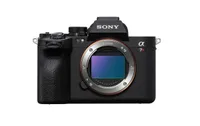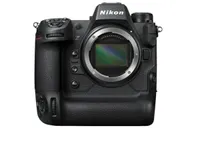TechRadar Verdict
Nikon has heralded the Z8 as the natural successor to the Nikon D850 – a DSLR that’s proved hugely popular with enthusiast photographers since its launch in 2017 – and it’s a fitting accolade. The Z8 is the Nikon camera that makes the most sense for most serious photographers. It packs the same levels of performance and image and video quality as the flagship Z9, in a smaller body without the built-in grip and larger battery, while leaving you enough change to pick up a decent lens and accessories. We may have seen it all before in the Z9, but the Z8 is also a contender for our Camera of the Year.
Pros
- +
Same cutting-edge stacked sensor as Z9
- +
Body design makes more sense than Z9 for most people
- +
Excellent video features
Cons
- -
Limited battery life
- -
Lower-resolution EVF than rivals
- -
In-body image stabilization is only okay
Why you can trust TechRadar
Nikon Z8: two-minute review
Our initial excitement for the Nikon Z8 may have been quelled by the fact that it’s essentially a ‘baby Nikon Z9’. However, after spending just a few minutes with the camera, the realization of what this actually meant clicked. It is one of the best cameras that money can buy; after all, we named the Nikon Z9 our Camera of the Year in 2022, and now what is essentially that same camera is available in a smaller and lighter body at around three-quarters of the price.
The Z9’s 45.7MP sensor is now tried and tested, and you can see more examples of what you can expect in our Nikon Z9 review. In short, the image quality is excellent, with low noise levels, although you will want to avoid settings above ISO 12,800 and the extended sensitivity settings. All the different image styles you would expect are on tap, and the colors are very typically ‘Nikon’. In fact, when you combine the image quality, colors, menu system and camera body, Nikon DSLR users from any time in the last 15 years will be able to pick up this camera and understand instinctively how to use it.
Based on our time with the Z8, its autofocus is super impressive, and on par with its competitors. Anyone who has used Nikon 3D Matrix tracking will know how good past iterations have been, and this latest version matches that found on the Nikon D850, except now it’s even better.

We’re now well acquainted with face and eye autofocus, and the animal detection of the Z8 seems just as competent. It easily recognised the heads and the eyes of herons, and even when shooting video it locked onto a duck’s head as it bobbled around on the water. Equally impressive is the Airplane AF mode, which spotted an airplane in the sky and locked onto it. Enthusiasts and professionals alike should find the AF great, with the caveat that we haven’t photographed fast-moving or erratic sports subjects such as football. However, the Z9 is a mighty performer and we can expect the same from the Z8.
As for the video settings, there’s so much to delve into that it was impossible for us to test everything in the short time we had with the camera. Still, the takeaways are that image stabilization works well, especially when digital stabilization is also employed. The autofocus system tracks subjects as effectively as when shooting still objects. There’s a huge array of different resolutions, frame rates and compression codecs to choose from, making the Z8 a versatile tool whatever the video project you’re working on – just watch out for overheating if you plan to film long concerts or other events where you simply lock the camera off and hit record.
In summary, the Nikon Z8 is packed with almost every feature you could ever need, making it a brilliant all-around camera.
Nikon Z8: release date and price
- $3,999 / £3,999 / AU$6,999 body-only
- Available from May 25
The Nikon Z8 was announced on May 10 2023, and is available to buy now, priced at $3,999 / £3,999 / AU$6,999 body-only. There’s stiff competition at this price point, and we've pitted the Z8 against the Canon EOS R5 and the Sony A7R V to see which mirrorless camera comes out on top.
Sign up for breaking news, reviews, opinion, top tech deals, and more.
Arriving alongside the camera is a new optional accessory – the Power Battery Pack MB-N12, which operates as a vertical grip and holds two additional EN-EL15 batteries. The list price for the MB-N12 is $349.95 / £349.99 / AU$649.
Given that the Z8 is more than 25% cheaper than the Z9, you could pick it up instead of the Z9, along with the MB-N12 pack filled with EN-EL15 batteries, and also get a mid-range Z-mount prime lens like the Nikkor Z 85mm f/1.8 S which is an excellent Nikon Z lens, and you’ll still likely have a little change left over.
- Price score 4/5
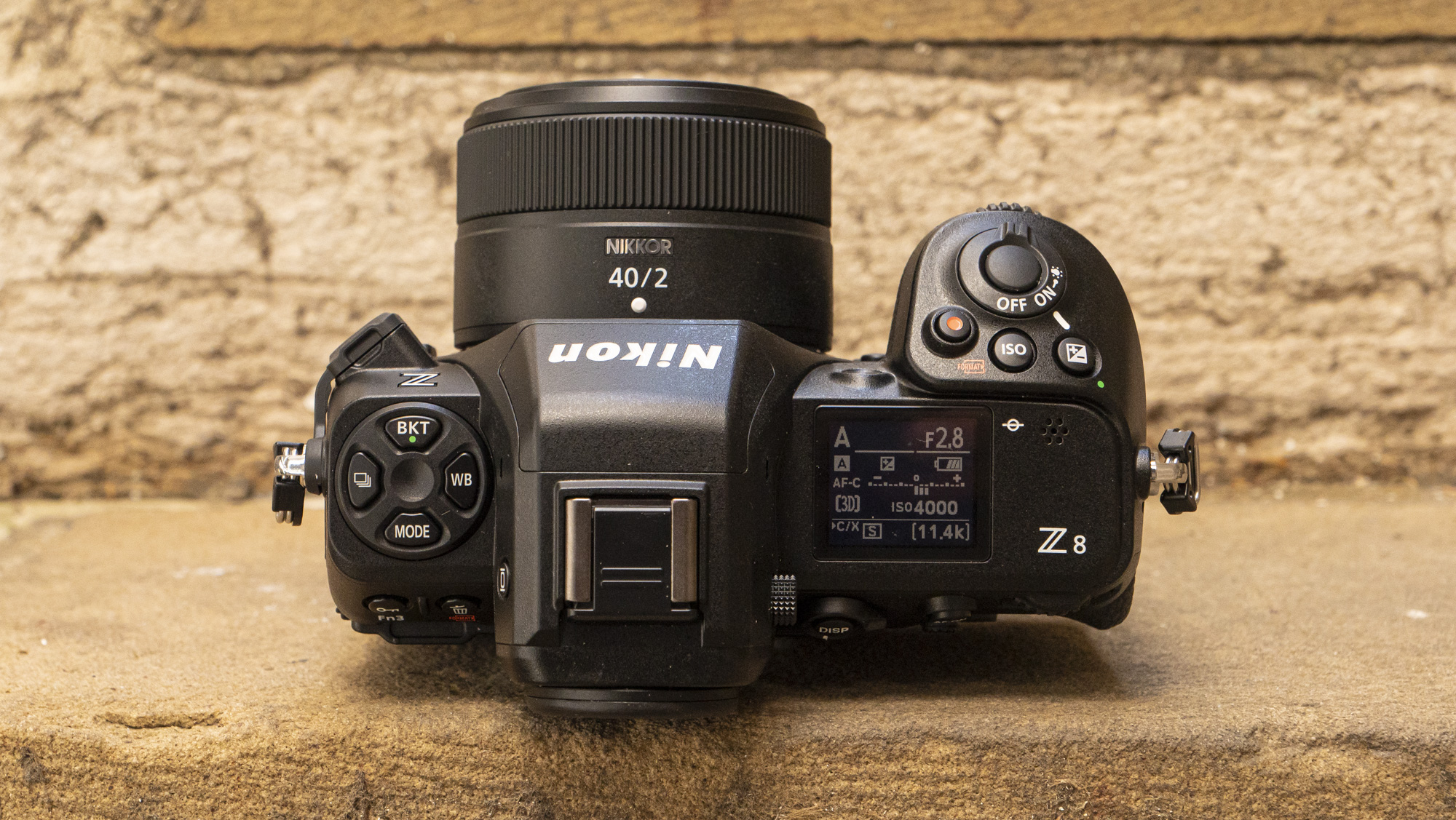
Nikon Z8: Specs
| Header Cell - Column 0 | Nikon Z8 |
|---|---|
| Sensor | 45.7MP CMOS full-frame (36 x 24mm) |
| Video: | 8K 60p / 4K 120p |
| AF points: | 493-point array |
| LCD: | 3.2-inch dual articulated touchscreen, 2.1m-dot |
| Viewfinder: | 3.69m-dot OLED EVF |
| Memory cards: | Twin CFexpress type B / SDHC UHS-II |
| Connectivity: | Wi-Fi 5GHz, USB-C |
| Max burst: | 120fps (11MP) 60fps (45.7MP) or 30fps with AE/AF and no blackout (45.7MP) |
| Size: | 144 x 118.5 x 83mm (5.67 x 4.67 x 3.27’’) |
| Weight: | 910g (with battery) |
Nikon Z8: design
- Mirrorless evolution of the Nikon D850 DSLR
- Weather-sealed 910g body
- Blackout-free viewfinder and versatile 4-axis touchscreen
Most of what’s new in the Z8 is in regards to its design; its features, performance, and image and video quality are virtually the same as from its bigger sibling, the Nikon Z9.
The key difference between the two cameras is their size. DSLR users can think of the Z8 as the mirrorless evolution of the Nikon D850, and if we think in the same terms, the Z9 is the modern-day Nikon D6.
Weighing 910g, the Z8 is 30% lighter than the Z9, which is a significant 1,340g, although still heavier than its rivals, the Canon EOS R5 and Sony A7R V, plus the Nikon Z7 II.
I’m used to the Z8 form factor, and I love how all of my hand sits within its grip; with smaller cameras like the A7R V, my little finger slides off the bottom. So while it’s lighter than the Z9, the Z8 is still a decent chunk of a camera and feels good with lenses of all shapes and sizes.
Its smaller size compared to the Z9 impacts the user experience in a few ways, and battery life is one. The Z9 has much better battery life, whereas the Z8’s is only mediocre at 340 shots, as I soon learned when rattling off hundreds of frames at the launch event. That said, there is the option to add the vertical grip with two additional EN-EL15 batteries to extend battery life, and the batteries in the grip can be hot-swapped for continuous power. In real-world, casual use, the Z8’s battery will last for a day or so. If you have the camera with you on a city break you’ll most likely be good for a day or two of shooting and reviewing images, but I would advise that most people carry a spare with them.





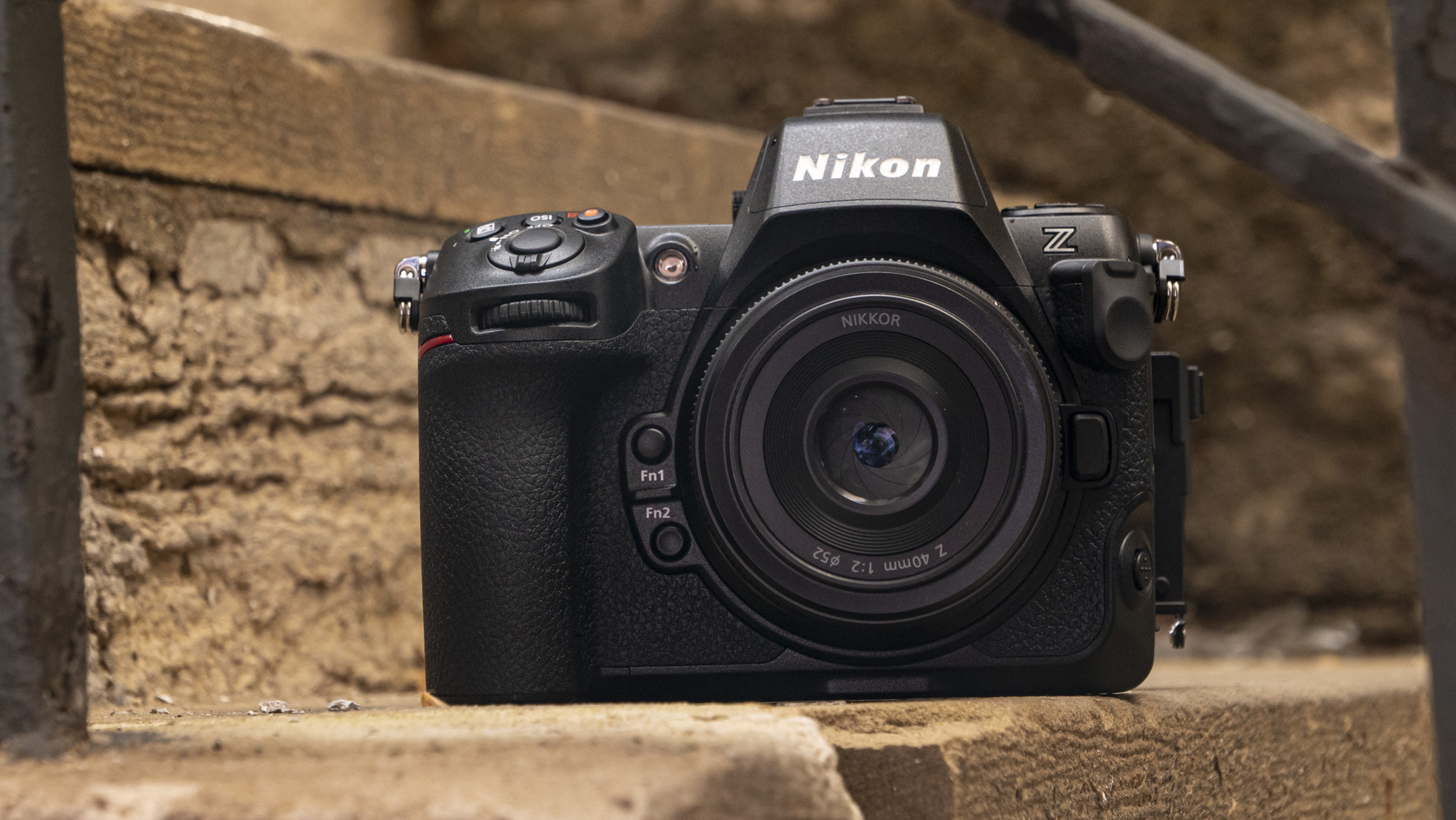
Charging on-the-go via USB-C is also possible, and the Z8 actually has two USB-C ports, one for power and the other for connectivity, which can be used simultaneously. I can’t think of another camera with two USB-C ports, which may make it an interesting choice for studio photographers wishing to shoot tethered while also powering the camera for hours at a time.
Nikon says the weather-sealing on the Z8 is the same standard as the D850's, and it sure is a rugged camera. It also has some of the flagship design features that I love, especially for working in low light, like a top LCD and illuminated buttons.
The 3.69m-dot viewfinder might not match the resolution of the Sony A7R V's, but it's a large and bright display with zero blackout, and as such is a pleasure to use, even for high-speed continuous shooting. The 3.2-inch, 4-axis tilt-touchscreen works well for shooting at all angles in both portrait and landscape formats, although it's no good for selfie shooting as it doesn't flip out and rotate – but then again, this isn't a vlogging camera.
In addition to its user-friendly design for photography, the Z8 boasts filmmaking tools such as waveform, focus peaking, zebra, linear focus and a red display border when recording. Nikon is also more generous than most when it comes to improving the performance and functionality of its cameras post-launch through firmware updates. The Z9 has had two major firmware updates, and as a result is a better camera in 2023 than it was at launch a year ago, and the Z8 picks up where the Z9 currently is, with those Z9 upgrades included in the Z8 out of the box.
- Design score 5/5
Nikon Z8: features and performance
- 20fps for up to 1,000 raw images
- Aircraft option added to subject-tracking AF
- Autofocus effective to -9EV
The Nikon Z8 is almost a complete match for its bigger sibling in terms of both features and performance. Both cameras feature the same-generation EXPEED 7 processor and stacked 45.7MP full-frame sensor with in-body image stabilization. Both exclude the mechanical shutter altogether – a trailblazing design choice by Nikon for 2022’s Z9.
The max continuous shooting rate is bumped to 30fps in JPEG only and up to 120fps if you can live with 11MP output. Continuous shooting at 20fps for up to 1,000 raw images comes with continuous auto exposure (AE) and subject-tracking autofocus (AF). I found that 20fps was plenty fast enough for me to capture precise moments of dancers at the launch event, and overall the Z8’s performance will satisfy the most demanding pro wildlife and sports photographers.
Nikon was keen to point out that it’s “evolving from JPEG to HEIF format” – the former having long been the industry-standard compressed image file format. For now, the Z8 includes both formats in addition to raw. In video terms, the difference between HEIF and JPEG is like the difference between 10-bit video and 8-bit video – HEIF offers one billion more colors than JPEG, and suits those who want greater dynamic range in their pictures.
It’s worth noting that although the Z8 features dual card slots, one is a CFExpress Type B slot, as used in both slots of the Z9, while the second slot is a UHS-II compatible SD Card slot. This is a double-edged sword, as while the SD card slot allows those who’ve accumulated a stack of SD cards to quickly get started with the camera, in order to really get the most out of it you need the contemporary CFExpress II cards.






For photographers who will be pushing the camera to the limits of its capabilities, it’s worth noting that CFExpress Type B cards generally have a quoted write speed of around 1,500MB/s. In contrast, the fastest UHS-II SD cards come in at around 300MB/s write speed – and these are the maximum write speeds, not necessarily constant write speeds. With Nikon’s 8K 60fps 12-bit raw data rate of around 750MB/s, you’ll need those CFExpress cards; even the ProRes 4:2:2 4K 60fps will struggle on an SD Card. If you have no interest in video, the fastest SD cards should provide you with more than enough capacity to shoot to your heart's content.
Inheriting as it does the autofocus of the flagship Nikon Z9, the Z8 performs exceptionally well. Such was my faith in the autofocus ability of the camera that I used continuous autofocus with tracking for much of my testing. This made it easy to select the point of focus and then adjust the composition, knowing that the autofocus target would remain locked in place. For general shooting, the autofocus works seamlessly.
Photographing perched herons was equally straightforward with the Z8. The camera’s Animal Eye AF detected the head and then the eye of a heron and was able to remain locked until the bird moved its head, after which it remained locked on the back of the head, treating it as an area to focus on rather than a specific animal target. As the heron’s head came back into view, it locked back onto the eye.
The Z8 is a true hybrid camera, offering 8K / 60p and 4K / 120p video with Nikon’s N-raw and ProRes raw internal recording as an option, with 12-bit color. Nikon claims a record time of 90 minutes in 8K and over two hours in 4K with no overheating. While we didn’t have time to test every eventuality, we pushed the Nikon Z8 to the limits of what it could record.
We were limited to the 64GB Lexar CFExpress Type B card that we had available at the time of the review, and so we had to work a little to record for long enough to get the camera to overheat. To push the Nikon Z8 to the limit, we recorded 8K 60p 12-bit N-raw footage to the card, which meant we could only record 1:26 min of footage before it was full. After quickly formatting the card (which took approximately five seconds), we could then continue to record. After just over five minutes, an alert appeared on the screen warning that the memory card was getting hot. After around nine minutes 30 seconds the first temperature warning appeared on the camera, and at 12 minutes 30 seconds the next warning, which is red rather than yellow, appeared. After around 17 minutes, a warning appeared saying that the camera would shut down in 30 seconds. During this time, the footage in the buffer was saved, and the camera turned off with a message saying it couldn't be used until it cooled down.
There are a number of caveats to this test: the room temperature was around 21C, and the Lexar CF Express type B cards are notorious for getting very hot quickly, so they’re not ideal for long video takes. The camera was set to the standard temperature cut-off rather than the high-temperature shutdown setting, so you may get much longer at the latter setting. Using an external battery pack and powering the camera over USB-C will also significantly help to reduce heating.
Overall our quick test aligns with the results noted by others who’ve tested the Z8. The general feeling is that while it will be great for short clips, you may want to use an external battery and a professional video CF Express Type B card that runs ‘cool’ if you’ll be shooting very long continuous videos or shooting in hot conditions. If you’re just creating 10min 4K videos for YouTube, you shouldn’t run into overheating issues.
- Features and performance score: 4.5/5
Nikon Z8: image and video quality
- 45.7MP stacked sensor
- 8K / 60p video up to 90 minutes recording
- In-body image stabilization
Like the Z9, the Nikon Z8 is an extremely capable hybrid camera, delivering superb photo and video quality. It doesn’t match the 61MP resolution of the Sony A7R V – a change that was hoped for by some – but its 45.7MP resolution is plenty for most, and positively impacts its performance for high-speed shooting. With fewer pixels the Z8 is twice as quick as the A7R V, which may be a trade worth making depending on the kinds of photography that you do.
During the launch event I was able to shoot studio portraits with the Nikkor Z MC 105mm f/2.8 VR S lens, and the detail is pin-sharp, as you can see in the images below. I took photos of dancers using the Nikkor Z 40mm f/2 S and Nikkor 24-70mm f/2.8 VR S lenses, and I also used the Nikkor 28-70mm f/2.8 and Nikkor Z 100-400mm f/4.5-5.6.
Generally, the image quality is everything you would expect from a Nikon camera. Existing Nikon users will feel right at home knowing exactly how to edit the image to their preference, with the color science seemingly having remained unchanged for many years. As a former Nikon user, I instantly felt at home with all the default sharpening and noise reduction settings applied.
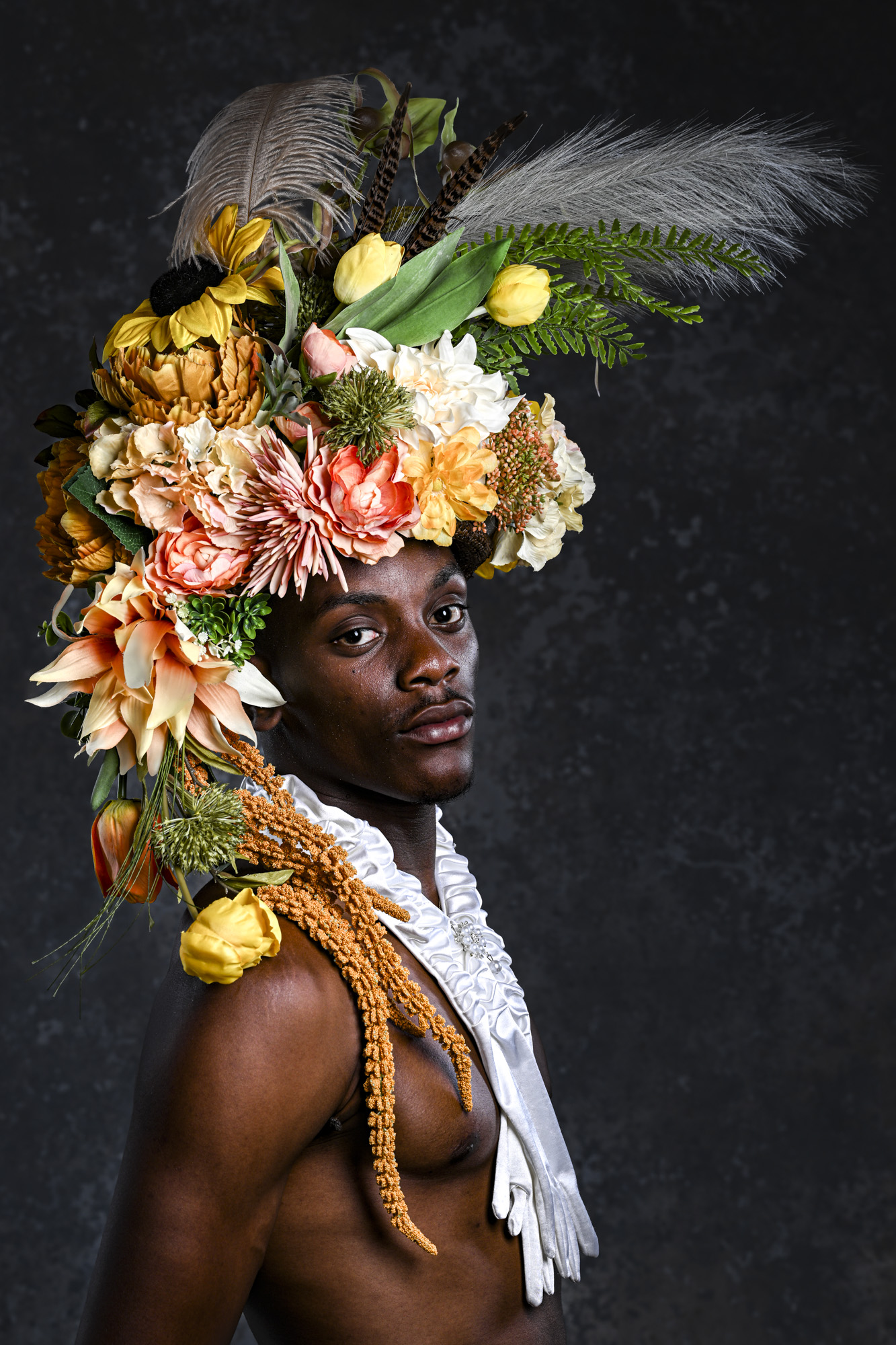
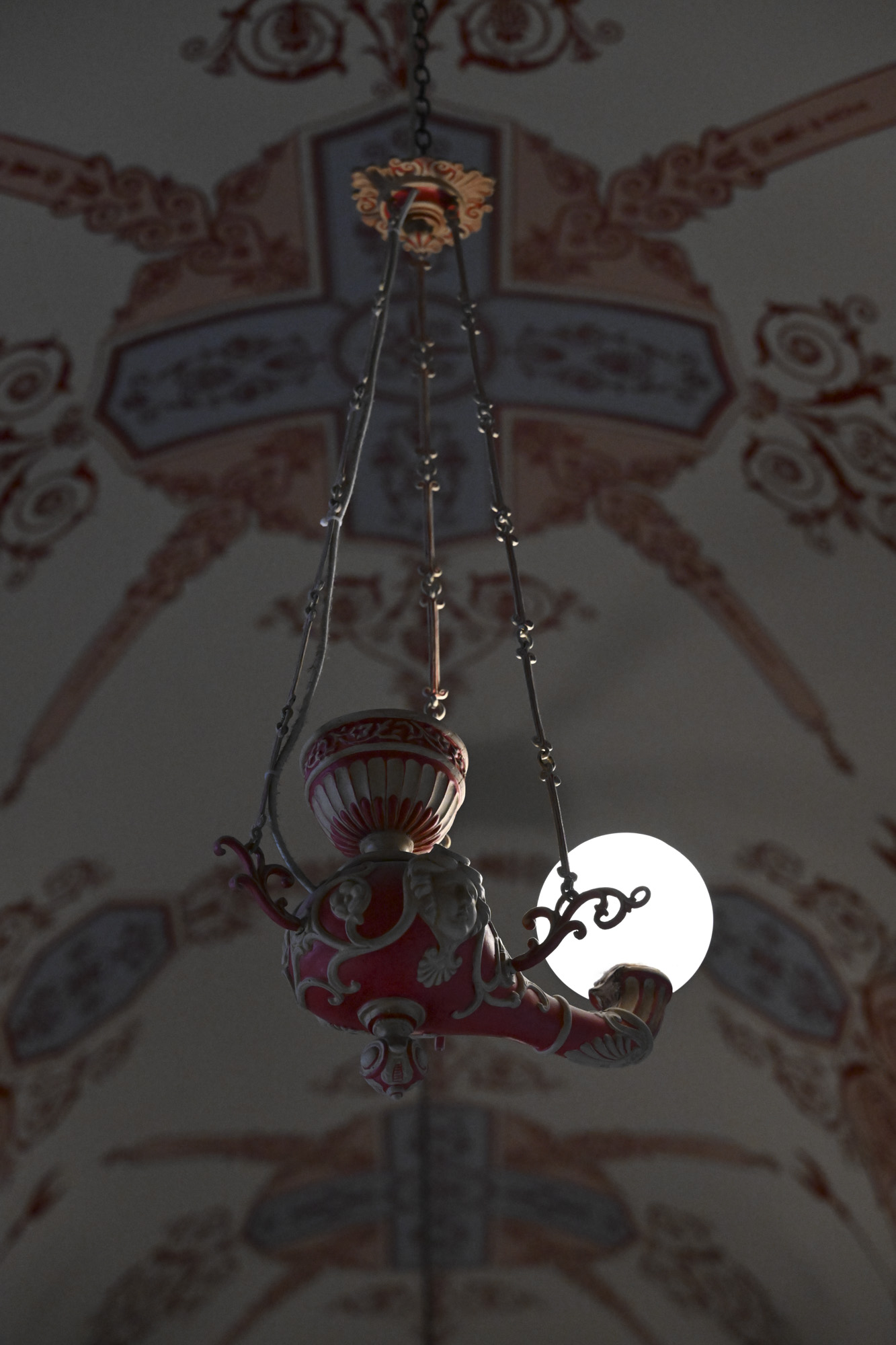


Perhaps the only negative thing to say about the image quality is also a positive – we’ve seen it all before, so in this respect it lacks that ‘wow’ factor. But this is harsh, as what the Z8 does is provide clear and detailed 45.7MP images with a great dynamic range and the ability to push images to higher sensitivity settings without being concerned about image noise.
With the aim of achieving the best image quality, I would happily shoot up to ISO 6400 with the Z8 under normal circumstances, and like any other camera generally avoid the top two native ISO settings and any extended ISO settings, which in the case of the Z8 is ISO 12,800 and higher.



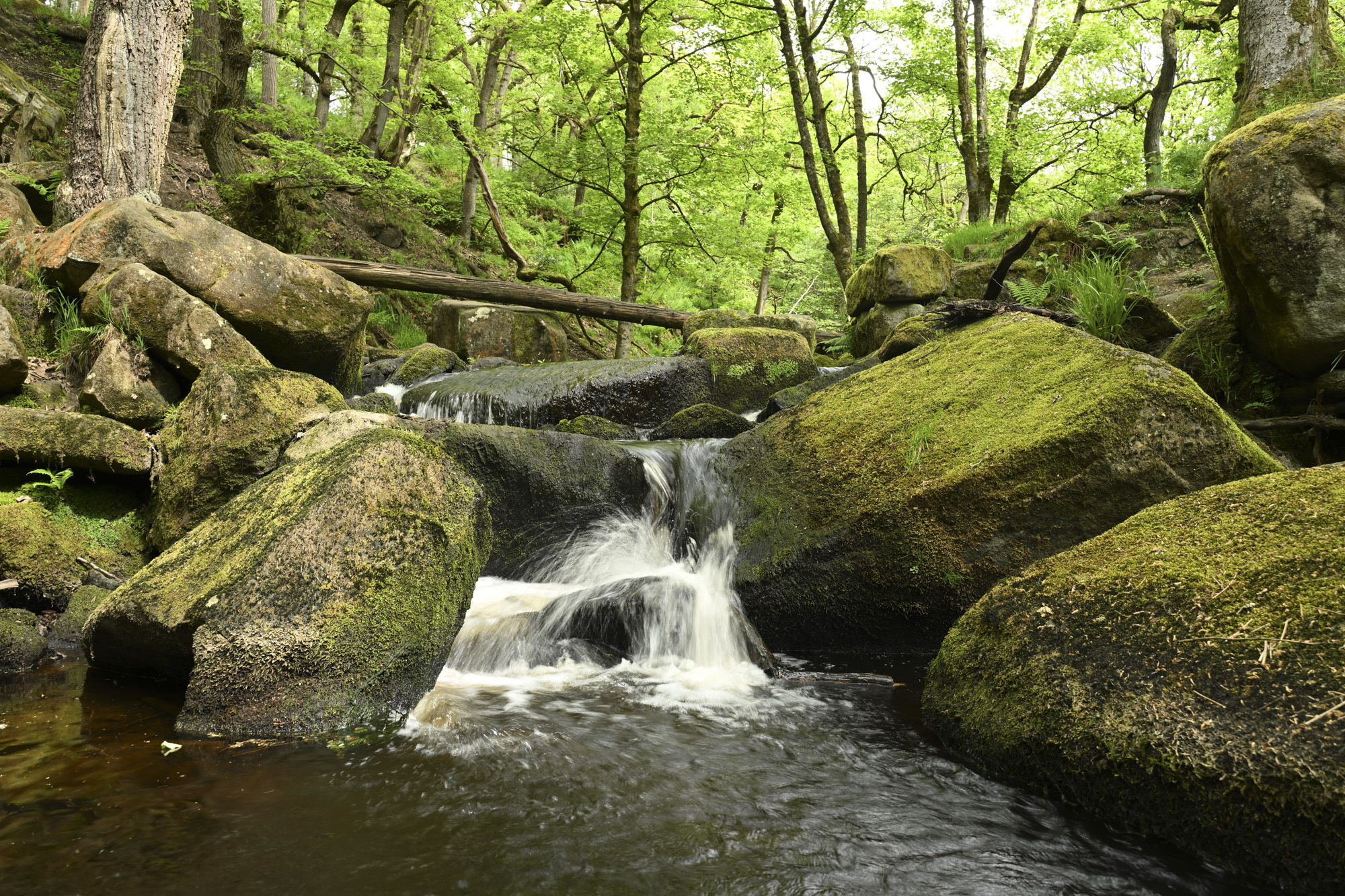

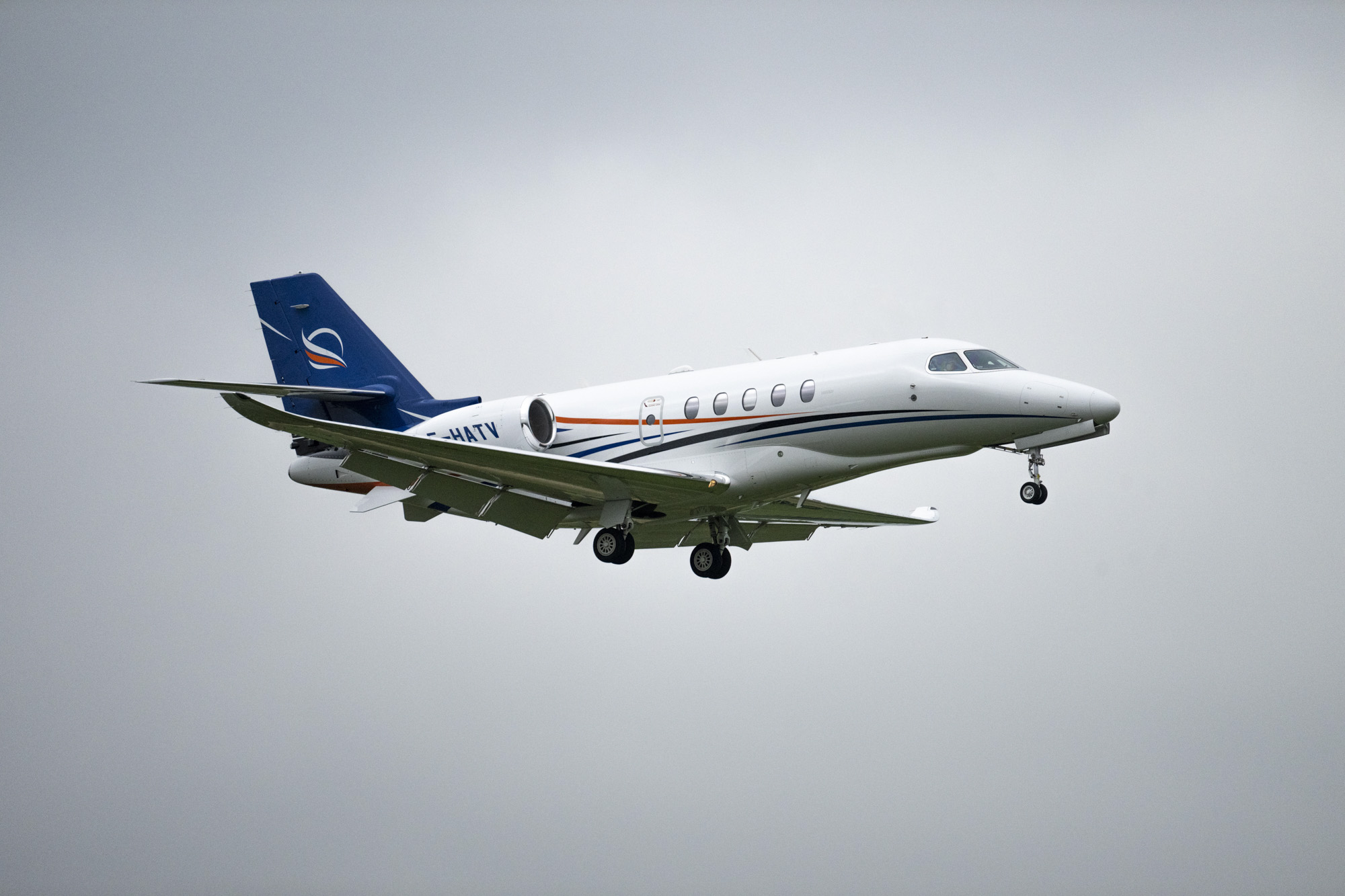


It’s surprising how far we’ve come in the last few years in terms of sensor technology and noise reduction algorithms, and there’s still a lot of detail still in images shot at ISO 6400. Even ISO 12,800 is usable in most cases, if you’re prepared for the slight loss in definition due to the noise reduction. This is a camera with an impressive sensor, as I know from having tested the Z9. The best AI photo editors like Topaz Photo AI only serve to further improve noise reduction, too.
With so many different resolutions, frame rates and compression codecs to choose from in the Nikon Z8 it would be impossible to do justice to its video capabilities in the time we had with the camera, especially from the standpoint of cinematographers, who are the most demanding in terms of their needs. My takeaway as a photographer who dabbles in video is that the Z8 will do everything I need. For most, the 8K raw will be excessive; 8K screens are still far from being the norm, so for the most part this resolution is mostly used to allow for post-production reframing, including creating vertical videos for social media. However, you likely won't need the precision of raw compression if you’re merely reframing for social media.
What is great is the option to shoot 4:2:2 ProRes internally. This offers the perfect balance of having plenty of color detail and a low compression level to keep details intact, if you get everything as close to perfect as possible. And as ProRes was created by Apple, it’s optimized for Mac computers. I had no issues with overheating while shooting clips for 10-15 secs at a time, and this should be the case for the majority of casual video shooters; and of course, you can get a lot more bang for your buck in every respect if you forget 8K and stick to shooting 4K.
The only other thing worth noting with regard to video is the stabilization. I was able to shoot handheld at 400mm, and although there was the occasional mechanical movement as I strayed out of the range of the sensor-based stabilization, for the most part, the movements were very gentle. Combine the sensor-based stabilization with digital stabilization, and the image remains locked off further. I’ve used better stabilization in other camera systems, but the Z8 is still a stable handheld shooter.
- Image quality score: 5/5
Should you buy the Nikon Z8?
Buy it if...
You want to upgrade your Nikon D850
If you're a D850 owner and have been waiting for the ‘right’ camera to switch to mirrorless, then the Z8 is the one for you, you'll be right at home.
You love taking photos and videos of anything and everything
The Nikon Z8 is competent at everything; landscapes, portraits, wildlife, sports, you name it.
You're into planes
The Z8's airplane subject tracking mode works a charm – you'll get a lot of success standing at the end of a runway or going to airshows to photograph airplanes.
Don't buy it if...
You're a heavy-use video creator
The Z8 doesn't quite have the same video chops as the Z9 regarding long continuous video sequences in hot conditions, and it will overheat sooner. Performance is still excellent, but the smaller body is for lighter use.
You want the highest possible resolution for landscapes
A 45MP resolution is plenty enough for most people, but there are other full-frame cameras out there that go better, like the 60MP Sony A7R V and Leica M11.
| Attributes | Notes | Rating |
|---|---|---|
| Price | Not cheap, but good value compared to competitors, including the Nikon Z9 | 4 / 5 |
| Design | Instant familiarity for Nikon users | 5 / 5 |
| Performance | Battery capacity and EVF resolution are the only real downsides | 4.5 / 5 |
| Image quality | Great performance from a tried and tested sensor | 5 / 5 |
Nikon Z8: Also consider
If our Nikon Z8 review has you considering other options, here are two more cameras to consider...
Sony A7R V
The A7R V has a higher-resolution 61MP sensor, plus the latest generation of Sony’s AF system, which now includes AI to do some pretty clever stuff in terms of knowing precisely what and where to focus. It can only shoot at 10fps, and its 8K is limited to just 25fps, with no option to shoot raw video internally. However, if landscapes and travel are more your thing rather than sports, wildlife or high-end video production, it’s a superb camera that costs the same as the Z8. The Z8 actually has more in common with the Sony Alpha 1, which is much pricier.
Read our full Sony A7R V review
Nikon Z9
Perhaps the most obvious alternative to the Z8 is the Nikon Z9, as the two cameras are virtually identical in terms of features. Whatever the Z8 has introduced will likely find its way into the Z9 via a firmware update. As discussed, the Nikon Z9 has a larger body with a built-in battery grip, and while this does make the camera heavier, it also offers far superior battery life, which is much needed with the sheer amount of images that the camera can blitz through when shooting at 30fps or recording 8K video. It also has better heat regulation for longer continuous record times, and dual CFExpress Type B card slots. Yes, it may cost around 25% more, but if you’re a professional at the top of your field it may be worth skipping the Z8 and going straight to the flagship Nikon Z system camera.
Read our in-depth Nikon Z9 review
How I tested the Nikon Z8
The Nikon Z8 is designed as an ‘all-rounder’ that’s capable of being able to shoot almost anything you might want to point it at. I shot both stills and video footage, including at 8K resolution, and shots bursts of photos of subjects such as birds in flight and airplanes to test the AF system. I used the Nikkor 28-70mm f/2.8 and Nikkor Z 100-400mm f/4.5-5.6 lenses, and also a vintage 1960s Nikkor 50mm f/1.4D lens, via the Nikkor FTZ adapter.
While it would be impossible to anticipate everything that professional and enthusiast photographers might want to shoot with a camera, we shot a number of different subjects to see just what the camera could, especially in regards to the performance of the AF system, and how the AF system performed for video. This was especially key given the new advancements in the AF system that come with the camera, notably the airplane detection AF mode. We also tried shooting handheld video with both the sensor-based and active stabilization, to gauge the differences between the two and test how they work in combination.
Finally, within the given limitations of the 64GB Lexar CF Express Type B card that we used for much of the test, we challenged the camera by recording 8K video footage, pushing the internal buffer and heat dispersion of the camera to see how long we were able to record for.
First reviewed May 2023

Tim is the Cameras editor at TechRadar. He has enjoyed more than 15 years in the photo video industry with most of those in the world of tech journalism. During his time as Deputy Technical Editor with Amateur Photographer, as a freelancer and consequently editor at Tech Radar, Tim has developed a deeply technical knowledge and practical experience with cameras, educating others through news, reviews and features. He’s also worked in video production for Studio 44 with clients including Canon, and volunteers his spare time to consult a non-profit, diverse stories team based in Nairobi. Tim is curious, a keen creative, avid footballer and runner, and moderate flat white drinker who has lived in Kenya and believes we have much to enjoy and learn from each other.
- Richard SibleyWriter
